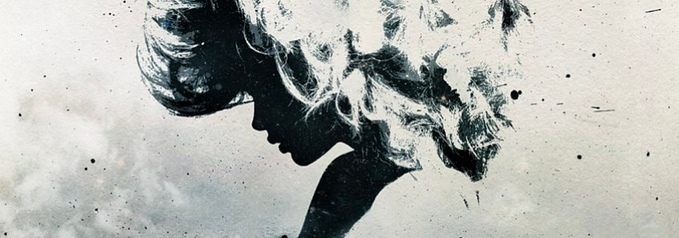Tony Romo Didn’t Want Your Life
Saying goodbye to the quarterback who was always playing a more interesting game.

The greatest thing I ever saw in a football game happened during what was otherwise the worst football game I had ever seen. It was the regular season finale between my beloved Dallas Cowboys and the hated Philadelphia Eagles, with the winner taking the NFC East title and the loser eliminated from playoff contention.* From the outset, the Cowboys were overmatched, and the Eagles were in complete control. It more closely resembled a September game between the University of Alabama and some poor Division II school than a game between two division rivals. It was another disappointing end to another disappointing season, and I was sitting there grappling with the usual end-of-season questions, like ‘Why the hell do I put myself through this every year?’
Late in the third quarter, the Cowboys had just failed to convert their eighty-seventh consecutive third down, and Coach Wade Phillips predictably sent out the punt team. ‘What a loser’ ran through my brain. They were already losing 35–0, so it wasn’t like Phillips’s defense was holding the Eagles down. But coaches always want to punt, because football coaches are the biggest cowards in all of sports. Bill Belichick will occasionally go for it, but I think he does it more to be a contrarian than any real sense of boldness. Rod Marinelli wrestled a bear once, but even he’d think fourth and five in his own territory was an unreasonably risky proposition. So with the season on the line, Wade Phillips decided that it was better to safely lose by 35 than to hope for a miracle comeback and risk losing by 50.
Tony Romo wasn’t having any of it. He waved the punt team off.
If you aren’t a big football fan, it’s hard to explain how shocking this was. Open insurrection on a football field just doesn’t happen. Phillips looked stunned, then pissed, then began screaming at Romo from the sideline, who just shrugged him off with a look of contempt, called his own play, and went for it. I honestly don’t remember if the Cowboys picked up the first down or not, and I haven’t bothered to look it up because it doesn’t matter. Tony Romo, with that one punk move, had become my all-time favorite football player. He became Jonathan Moxon.
Even if you remember the 1999 movie Varsity Blues, it probably doesn’t loom very large in your cinematic consciousness. On the surface, it seems like a by-the-numbers small town teenage rebellion movie. The protagonist is the (according to the script) overly intelligent backup quarterback of the high school football team, Jonathan “Mox” Moxon, played by James “Dawson” Van der Beek. The villain of the piece is the highly traditional football coach Bud Kilmer, portrayed by Jon Voight. Kilmer is a racist, uncaring bastard who cares more about his own glorification than the damage inflicted by shooting up his star players with painkillers.
Interestingly, this is not what really gets under Mox’s skin. The primary conflict in the story is his desire to run a spread passing offense called “the oompty-oomp.” I believe this is an illegal formation, because if it’s not, every team should immediately convert to it. He is also a big proponent of the hook-and-ladder play. Coach Kilmer is not a fan of these sorts of bold innovations. The rest of the movie is really just filler around a central conflict based on philosophical differences in offensive scheme. This was understandably not stressed in the movie’s marketing, and most people probably remember the movie for the whipped cream bikini scene, as well as early roles for Paul Walker, Ali Larter, Scott Caan, and Amy Smart. But when Mox tells his father that “I don’t want your life,” what he’s really talking about is the difference between an empty backfield and the I-formation.
When Mox is only the backup quarterback, these issues are more of an annoyance than an actual problem for Coach Kilmer. However, once star quarterback Lance Harbor is injured and Mox becomes the starter, there is an unavoidable battle of wills. Kilmer is incensed when Mox throws touchdown passes on plays he didn’t call and becomes an overnight celebrity in the town of West Canaan. He also takes the team’s best players to a strip club the night before a big game. This is similar to Tony Romo’s infamous trip to Cabo with Jessica Simpson before a Cowboys playoff game. The coach fights back by threatening to take away Mox’s scholarship to Brown (?!) and preventing the team’s one black player from scoring touchdowns. Everything comes to a head when Mox successfully leads a player revolt against Kilmer, installs the oompty-oomp, and defeats what appears to be a visiting XFL team by using a trick play.
While this is obviously an almost perfect movie on its own merits, for me it represents something even greater. Mox claims that he “loves football when it’s pure.” Most people would find that confusing because “pure” football is usually identified as the three yards and a cloud of dust style favored by the Bud Kilmers of the world. However, for Jonathan Moxon and I, the purest form of football is played at recess or after school, and it involves one quarterback and however many receivers are available. Pretty much everybody just goes long. This is so much more exciting than the best executed between-the-tackles run you have ever seen. Tony Romo, like his spiritual progenitor Brett Favre, plays football like two completions still equal a first down and the defense is only allowed to rush after they count ten apple. In a bit of cosmic serendipity, Romo graduated high school the same year Jonathan Moxon would have if he weren’t fictional.
Even before he refused to let his coach’s blind allegiance to conservative football orthodoxy sully the purity of his game, I was pretty enamored of Tony Romo. A college star at tiny Eastern Illinois, he wasn’t drafted by any NFL team, but managed to make the Cowboys as their third string quarterback. Three years later he became the starter and led them to the playoffs, becoming a media sensation in the process. For some reason, his habit of wearing his cap backwards on the sidelines became a huge controversy in Dallas. While incredibly stupid, this kind of criticism shows how deeply entrenched in a conservative mindset most football people are. When Terrell Owens inevitably turned on Romo, one of his primary complaints was that he would often draw up plays on the ground in the huddle.
Romo has a reputation of being a choker, which doesn’t seem totally unwarranted until you discover that he has the highest fourth quarter QB rating in NFL history, and has led more game winning drives than anyone in football since he became a starter in 2006. This reputation stems from his habit of throwing interceptions at the end of games. Most of these interceptions were the result of his trying to somehow will his team to victory against superior opponents, but it made him an easy target for football analysts. Commentators love to spout platitudes about how turnovers are basically the football equivalent of a war crime, but seldom acknowledge how many games could have been won with more aggressive decision making.
There was also the game where he led the Cowboys to a victory over eventual NFC champion San Francisco despite playing the second half of the game with a punctured lung. But since that game was played in October rather than January, it wasn’t enough to keep people from wondering if Romo could win “big games,” a poorly defined metric if there ever was one. He actually has led his team to a playoff victory, a fact that is constantly misreported.
Now an NFL veteran at age 37, injuries and non-stop criticism have sadly tempered Romo’s flair a little. He got married, became a father, and turned his cap around. In 2014, an improved offensive line allowed the Cowboys to run the ball successfully, taking pressure off the quarterback to win every game by himself. The general media perspective has been to see this as a triumph of conventional football thinking. I can practically hear Coach Kilmer explaining the virtues of grinding the tempo of the game way down to Mox. All this ignores the fact that the Cowboys have only been a relatively competitive team over the years because of Romo’s ability to creatively manufacture big plays. In 2015 and 2016, back injuries cost Romo most of each season and ultimately led to the ascendancy of Dak Prescott. While Prescott is an excellent quarterback and seems like an admirable person, he thus far hasn’t had the same impact on me as a fan. I never get the impression that he secretly wants to draw up plays in the dirt.
Today marks the end of Romo’s time with the Cowboys**, and while their future is bright, his is uncertain. I’m sad for him because I know he feels like he never accomplished his goal of winning a championship, even though that’s a ridiculous expectation that sports fans put on their heroes. I hope that he signs with a good team and has one more magical run left in him. It will be the first and probably only time I will want a team other than the Cowboys to win the Super Bowl. He doesn’t have much time left in the game, even in the best case scenario, and I doubt that I will ever care about football as passionately after he is gone.
I remain convinced that if Tony Romo were allowed to run the oompty-oomp, he would be the greatest quarterback in the history of football.
*The game referenced was played on December 28, 2008, and afterwards Romo gave a press conference where he acknowledged that he was going to have a good life regardless of the outcome of a football game, which was a total Mox answer. You can read about it here “The Pretty Good Life of Tony Romo” by Bryan Curtis https://theringer.com/tony-romo-release-dallas-cowboys-dak-prescott-16e63faec1fb
**This essay was originally published on March 9, 2017, when it was widely assumed Romo would be released by the Cowboys, and he released a farewell video to the fans on social media. However, he was not released that day, and ultimately chose to retire on April 4, 2017, to become the new lead NFL analyst at CBS. His decision relieved me of both the pain of watching Tony play for another team, and the agony of listening to Phil Simms call football games.










